With only two full days in Kyoto, Melody and I knew that we’d have to use our time wisely. I had read that Highashi Honganji was only a fifteen minute walk from Kyoto Station, so we started our day there. A Shin Buddhism temple built in 1602, Higashi Honganji was surprisingly and eerily quiet when we visited. With the place mostly to ourselves, we took our time exploring the huge wooden structure in the morning cold.
Since I’m always after the food, we soon left the temple and took the subway to downtown Kyoto, where we arrived at my favorite destination in the city: Nishiki Market. Spanning several blocks and specializing in local and artisanal foods, the market was filled with sweet wagashi, all kinds of seafood, freshly-cooked snacks and just about every variety of pickled vegetable that you can imagine. People in Kyoto take their pickles seriously, and for good reason. They’re absolutely delicious.
Melody and I enjoyed a few freshly-cooked fish cakes as a snack while we walked along, as well as the most incredible savory grilled mochi I’ve ever had. (Hey, San Francisco’s Japantown! Step your game up and start selling these!) Each piece of mochi was sprinkled with a different flavor: sesame, ume (pickled plum), nori seaweed, and chili pepper.
Our next destination was Daitoku-ji, a Zen Buddhist temple. On the long walk there, we stopped at a nearby restaurant for lunch. I don’t remember its name, only that the menus were adorably drawn by hand and the interior was decorated with owl statues.
I had the shrimp tempura soba with rice, sunomono and delicious tsukemono.
Daitoku-ji is huge, and while it originated as a small monastery in the 1300s, it quickly grew into a large complex of 22 subtemples spread out through 56 acres.
The main temple and a few of the subtemples are open to the public and display Zen design, including gardens and tea ceremony rooms. Every few steps, I noticed a painter quietly tucked into a corner, sketching a subtemple or garden.
After Daitoku-ji, we rushed to make it to our next destination, Fushimi Inari-taisha. Deep in the woods, Fushimi Inari-taisha is the head Shinto shrine of Inari and sits at the base of a mountain. Countless torri, or gates, line the way up the mountain to smaller sub-shrines, and the secluded nature of the area lends the whole place a spooky kind of air. As beautiful as it is, it’s not the kind of place I’d want to get lost in at night.
By the time we left Fushimi Inari-taisha, it was past dusk, and we headed back to Kyoto Station, where we admired the glittery station and its awe-inspiring views.
For dinner, we headed to Kokkekokko, a loud, fun restaurant specializing in yakitori and a staff that yells “arigato gozaimasu!” as heartily as I’d ever heard. We started with the chili shrimp and chicken heart yakitori, which was some of the most tender and flavorful heart I’ve tasted.
Next, we shared a steaming bowl of oden, a warming seasonal dish of boiled eggs, daikon radish, konnyaku, and fish cakes stewed in a light, soy-flavoured dashi broth.
Finally, we had a plate of okonomiyaki, slathered in delicious okonomiyaki sauce and katsuobushi. Technically, this version of okonomiyaki was modanyaki, or “modern yaki,” because the grilled batter included a layer of fried yakisoba noodles.
Before calling it a night, Melody and I visited a local bar, where we had a couple of Suntory whiskey highballs (I had ume plum flavor) and shared a plate of fried potatoes. Not bad for a day’s worth of eating and exploring.

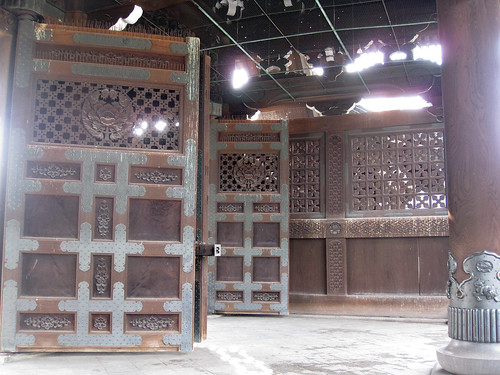
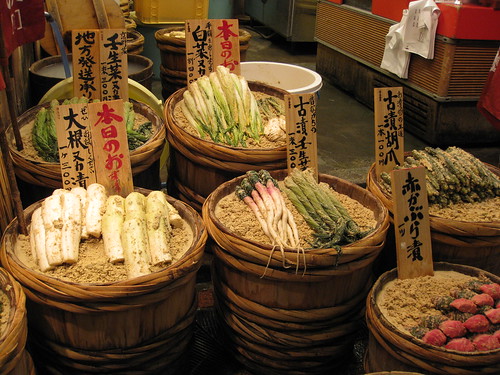
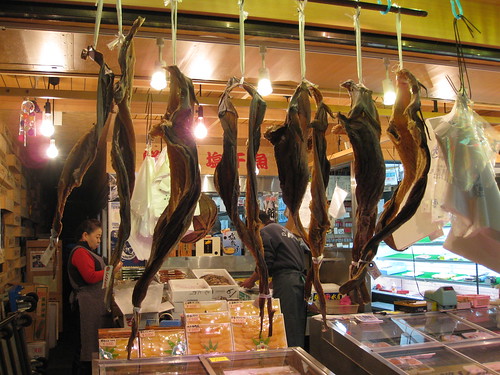
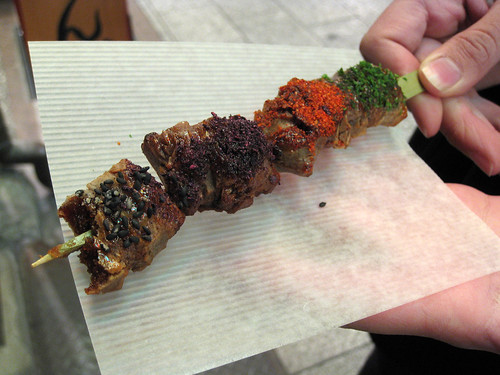
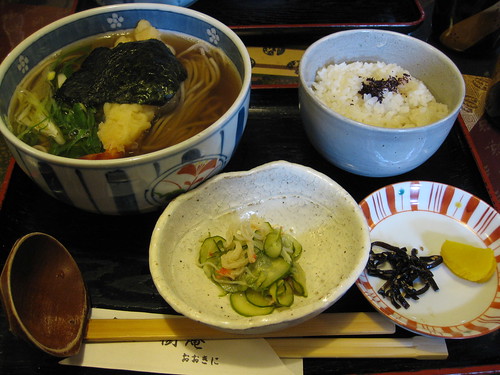
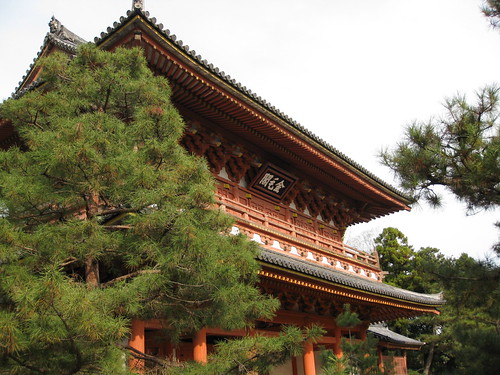
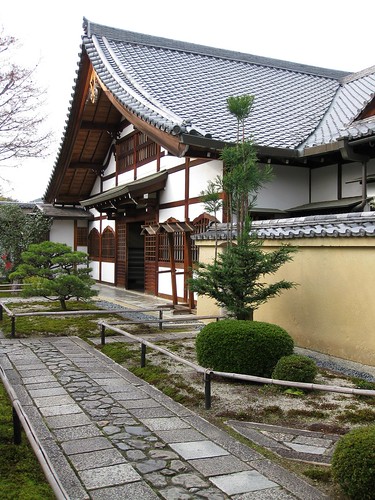
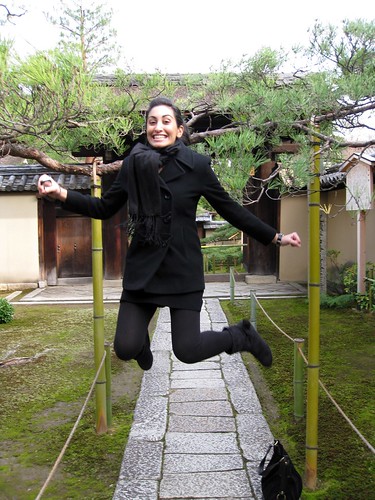
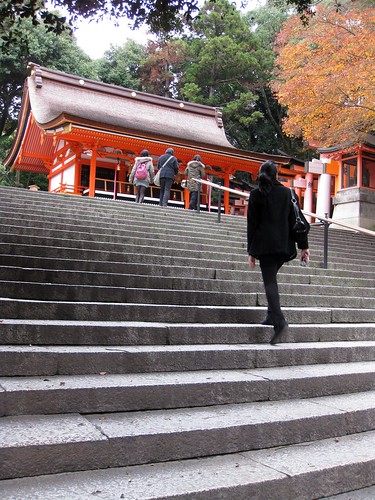
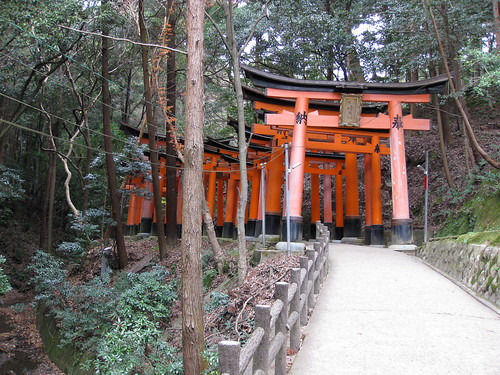
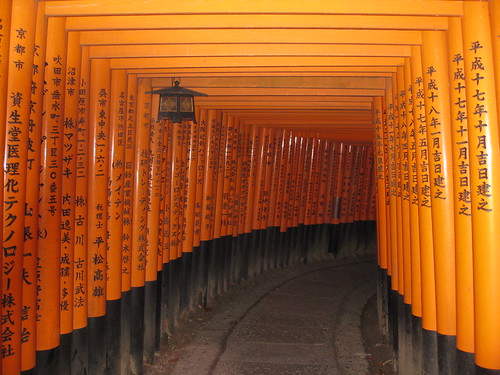
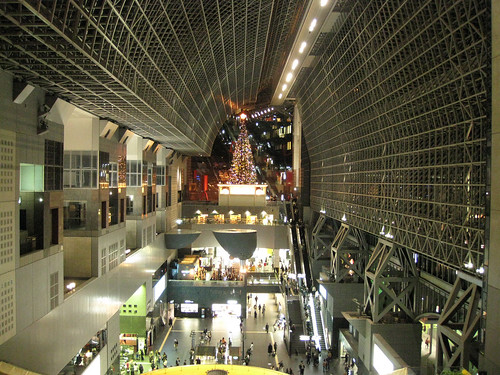
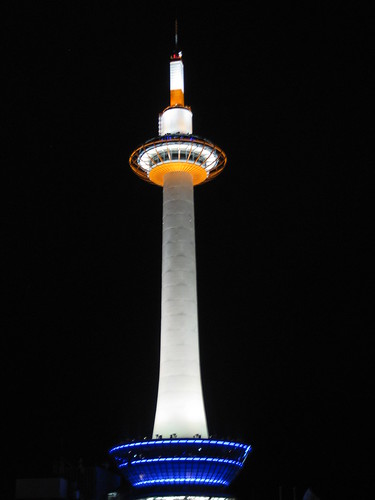
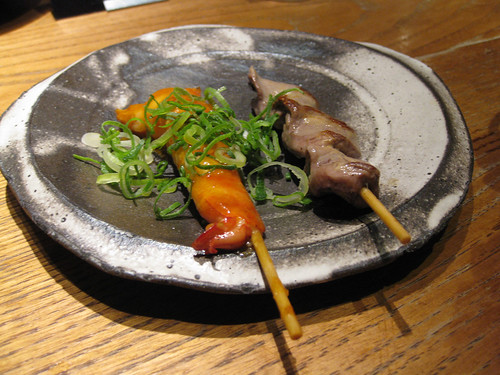
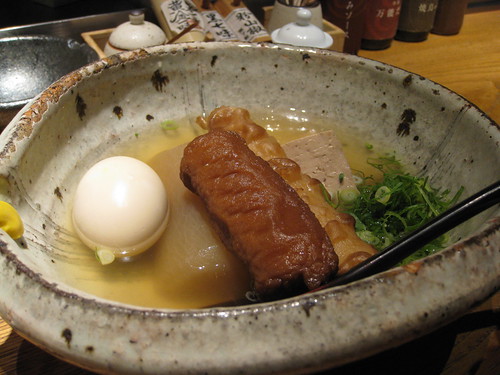
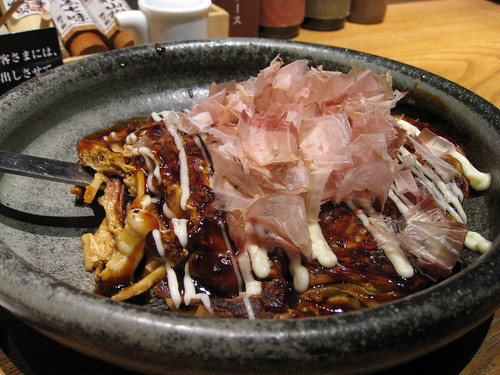
The grilled mochi looks very vey delicious! I’m diggin the design of Kyoto Station… very fresh.
Oh and Melody randomly jumping in various pictures is quite awesome hahaha
Kyoto Station was incredible! You could get lost in there for hours and not see the same thing twice.